Product Traceability
Product traceability is a great investigative tool. Say, for example, that a certain batch of cheesecakes has an odd texture. Using the traceability tool, you can find out how many of them you have on hand, how many have been shipped out and to who, and what lot numbers of ingredients were used in the production of the cheesecakes. This can help pinpoint a problem ingredient, such as old cream cheese.
To use product traceability:
- Navigate to the Inventory Centre then click the Product Tracking button.
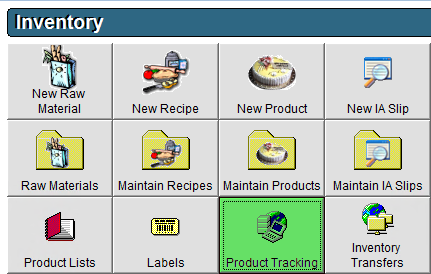
- Click the Product Traceability button.
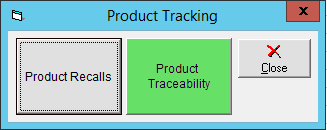
- Enter in the associated product Batch Number and click Search or press Enter on your keyboard.
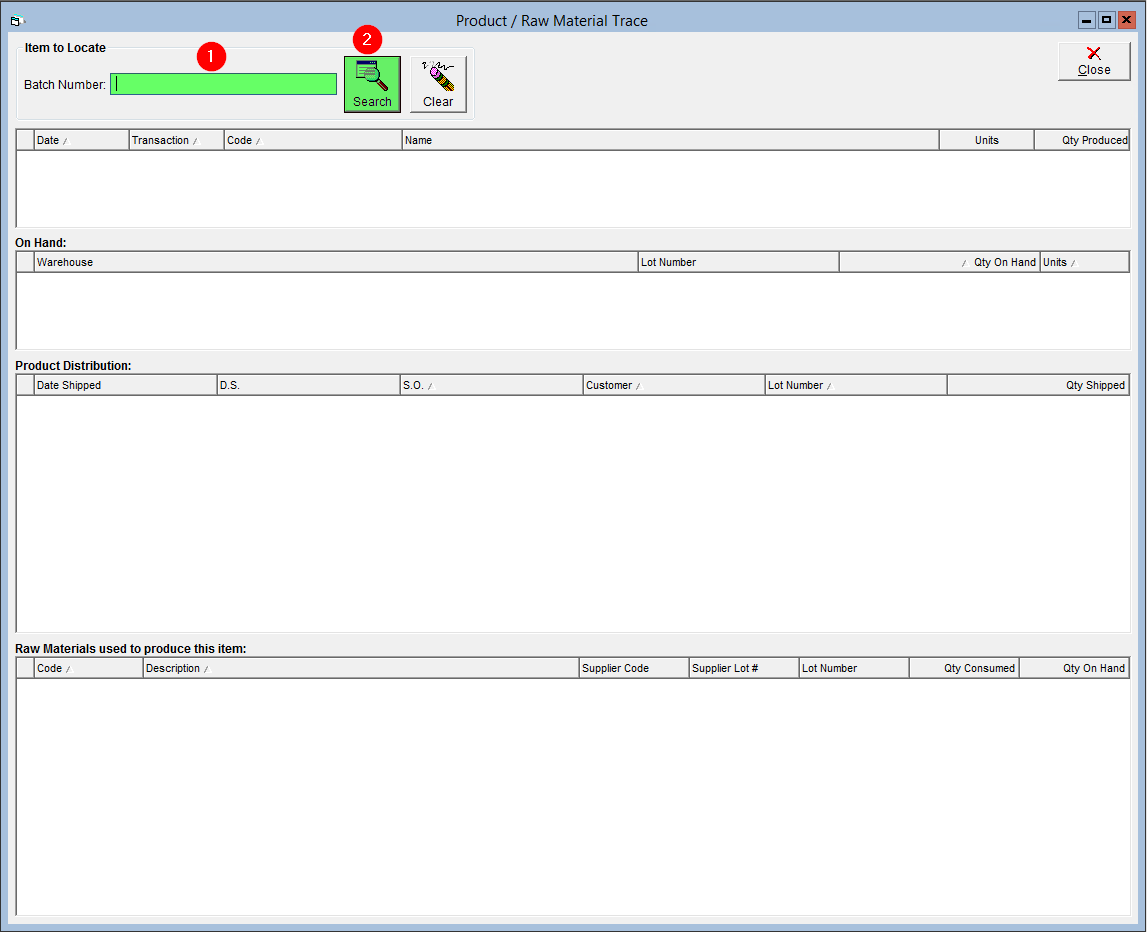
- If more than one product is associated with the entered Batch Number, click on the product in the top grid. If only one product has been assigned the Batch Number, all details regarding this item will be displayed.
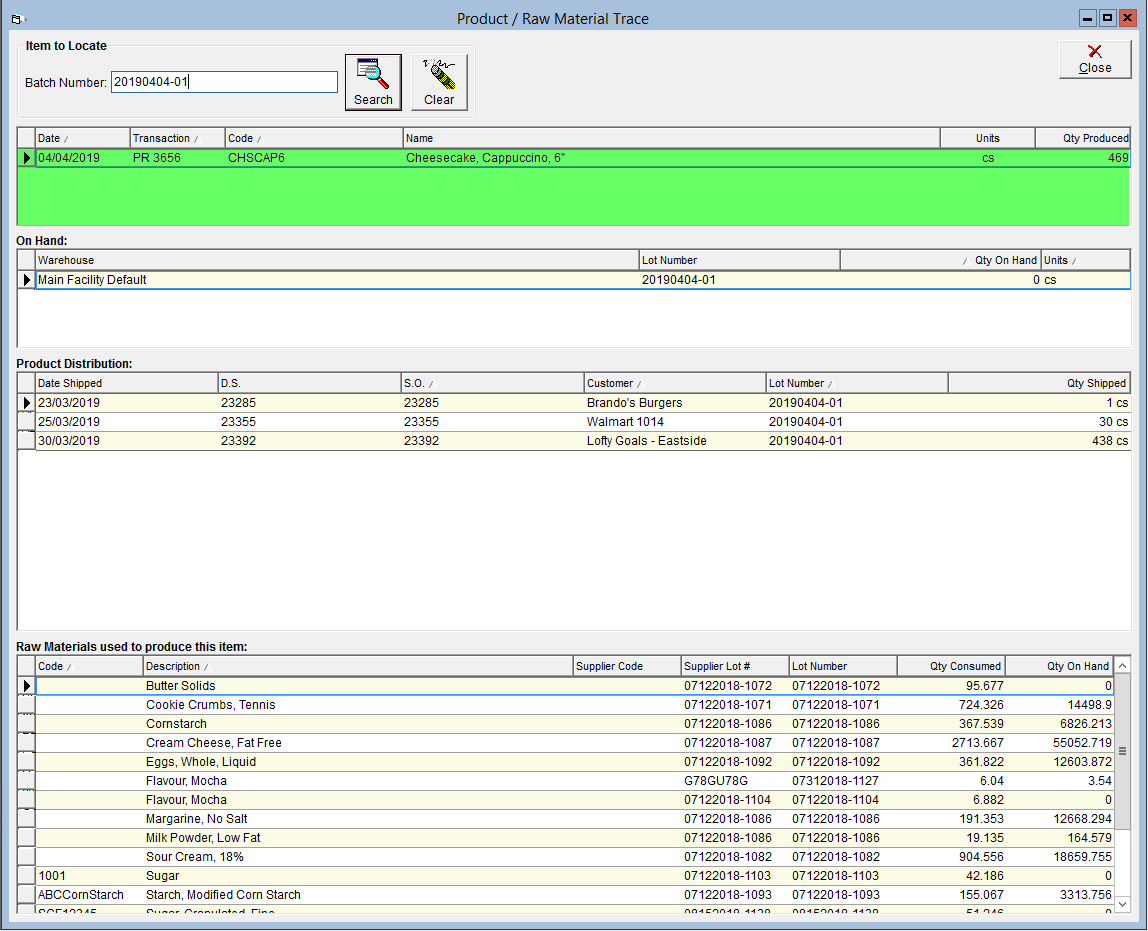
- The On Hand grid will list how many of the product are still in inventory, and at which warehouse (should you have multiple).
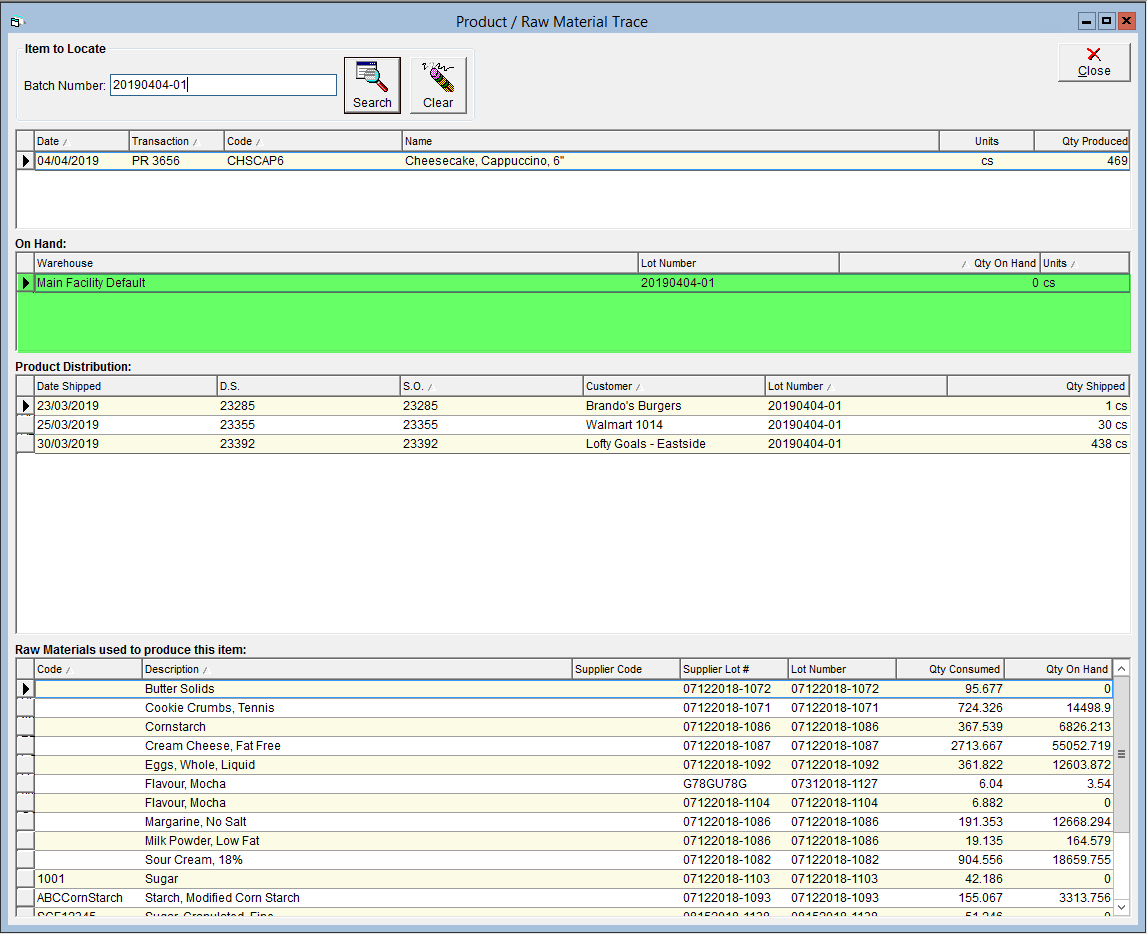
- The middle grid, Product Distribution, will show you which customers this batch of product was sent to. If you would like to export a list of these customers to allow you to follow up, click in the grid to highlight a record and then click Print or Export on the top menu bar of the program.
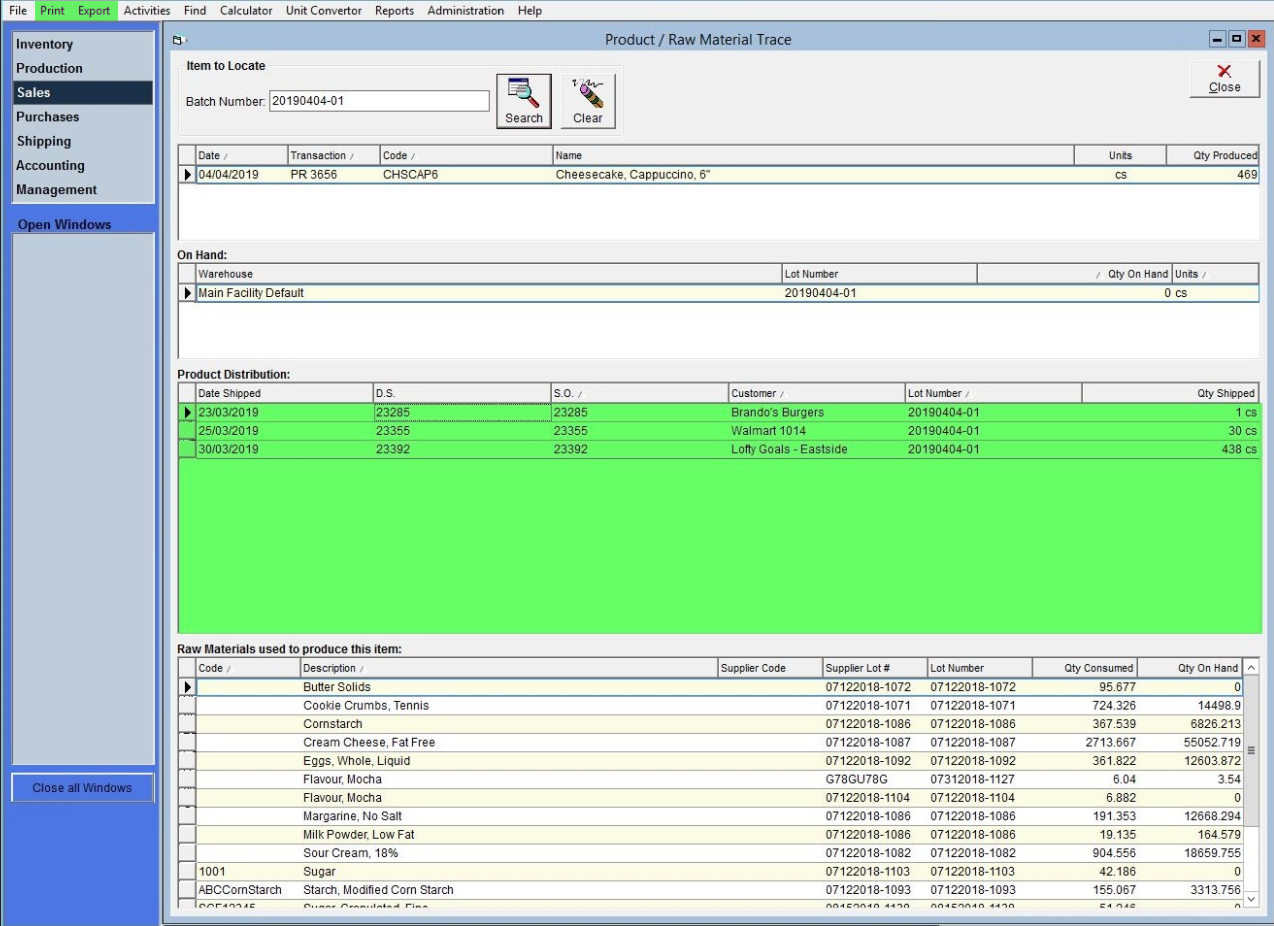
- The bottom grid, labelled Raw Materials used to produce this item, will show you a list of the raw materials that were used in production of this batch. For more details about a specific raw material, such as other items which used it during production, double click on the specific record which will bring you to the Product Recall screen.
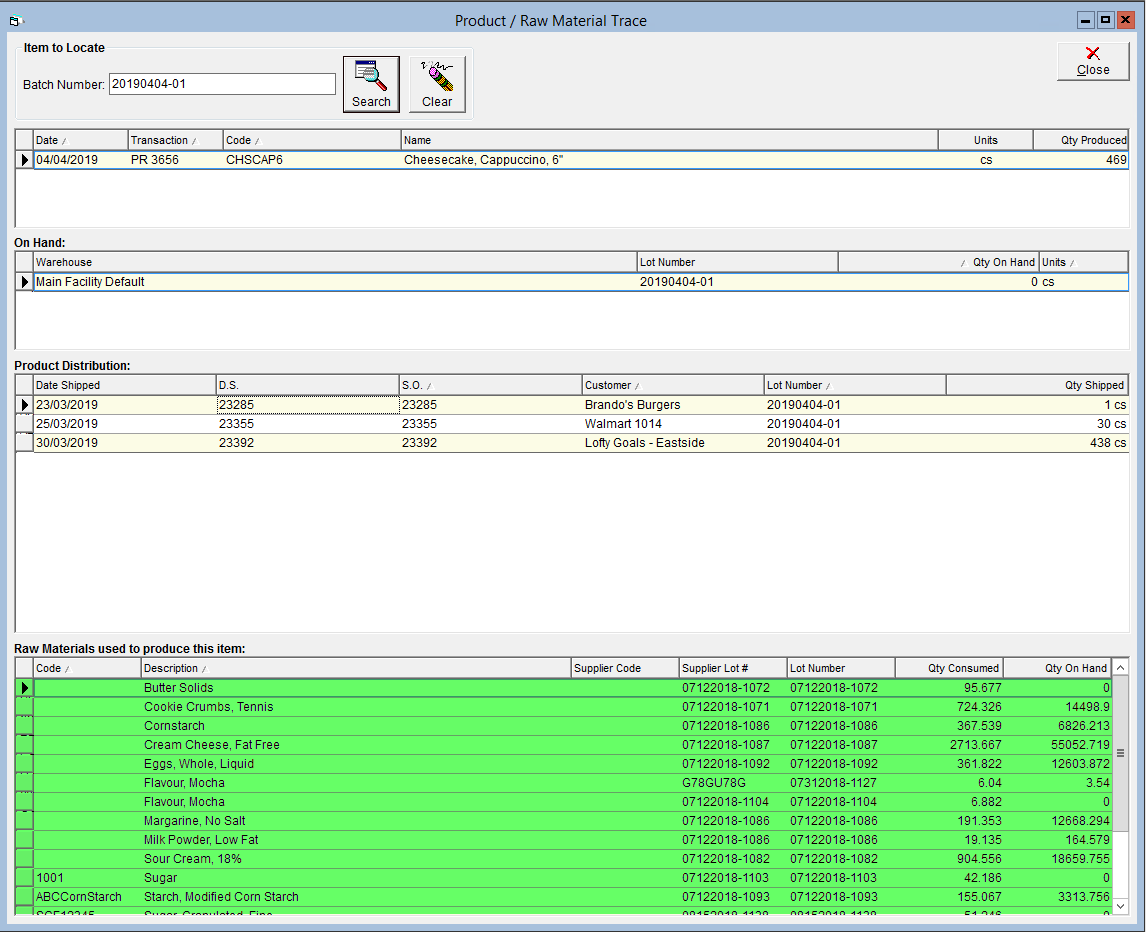
A video overview of this topic is available below: